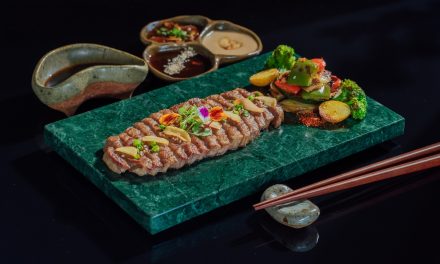When I first stepped foot in Seminyak, Bali, I was immediately captivated by the vibrant culture, stunning beaches, and, of course, the tantalizing aroma of the local cuisine drifting through the air. I always believed that the best way to truly experience a culture was through its food, and what better way to dive into the culinary wonders of Bali than by participating in a traditional Balinese cooking class?
The Allure of Balinese Cuisine
Imagine yourself walking through a bustling local market, surrounded by colorful spices, fresh vegetables, and exotic fruits. The scent of lemongrass, galangal, and coconut fills your senses, and you can’t help but feel excited about what you’re going to create. The first thing that struck me was the rich tapestry of flavors and textures that define Balinese cooking. It’s not just about eating; it’s about culture, community, and connection.
One of the most memorable experiences I had was when I joined a cooking class led by the warm and welcoming Chef Wayan, a local who was passionate about sharing his heritage. He emphasized how the ingredients are often sourced from the surrounding gardens or local markets, making the dishes not only fresh but also deeply tied to the land. It felt like a sacred ritual, one that I was eager to partake in.
Choosing the Right Cooking Class
With so many traditional Balinese cooking classes available in Seminyak, it can be overwhelming to choose the right one. Here’s what I learned during my adventures that can help you find the perfect fit:
1. Research the Instructor: Look for classes led by locals who have a deep understanding of Balinese cuisine. Chef Wayan was not only knowledgeable but also infectious with his passion, making each session engaging and enjoyable.
2. Check Class Size: A smaller group means more personalized attention and a better hands-on experience. My class had about five participants, which allowed me to ask questions freely and learn at my own pace.
3. Look for Authentic Experiences: Some classes start with a visit to the local market, which I found invaluable. It’s where you can learn about choosing the freshest ingredients and get a true sense of Balinese culinary life.
4. Dietary Preferences: If you have specific dietary needs, ensure that the class can accommodate them. Many instructors are well-versed in vegan or vegetarian options, given the abundance of plants and spices in Balinese cooking.
5. Reviews and Recommendations: Check online platforms for reviews, but also ask fellow travelers for their recommendations. The word-of-mouth endorsements I received led me to an amazing experience.
A Day in the Class
The day I attended the cooking class, I remember waking up with excitement. After a hearty breakfast, I donned my apron (which looked quite questionable, but it didn’t matter) and met my fellow classmates at a charming outdoor kitchen surrounded by lush gardens.
Chef Wayan started by introducing us to the traditional Balinese spices and their uses. We learned how to make Bali’s iconic sambal – a chili paste that can transform any dish into a burst of flavor. As we chopped, blended, and smelled the vibrant ingredients, I realized how much love and care goes into each preparation.
One of the highlights was making Nasi Goreng – Balinese fried rice that I had enjoyed numerous times but had no idea how to make from scratch. I will never forget the joyous chaos in the kitchen as we mixed and matched our secret ingredients, adding a personal touch to the dish, just like Chef Wayan encouraged us to do.
Bringing Home the Experience
After a few hours of laughter, learning, and tasting our creations, I felt a sense of accomplishment and a lasting connection to Balinese culture. Each dish told a story, rich with history and tradition, and this experience was something I cherished immensely.
As someone who loves to cook, I was eager to replicate these recipes back home. Chef Wayan provided us with a handy recipe booklet filled with tips and tricks to ensure we could create an authentic Balinese meal for our friends and family. I’ll never forget the thrill of recreating the dishes and sharing them over a dinner party, where my guests were taken on a virtual trip to Bali through a meal.
Practical Tips for Your Cooking Adventure
If you’re considering taking a traditional Balinese cooking class in Seminyak, here are some practical tips to enhance your experience:
– Wear comfortable clothes: Cooking can get messy, and you want to feel at ease while you’re chopping, stirring, and frying.
– Bring a notepad: There’s so much to learn, and jotting down notes can be incredibly helpful for when you return home.
– Engage with your classmates: Cooking together fosters a unique bond. I found that sharing stories with fellow travelers made the experience even more enriching.
– Ask questions: Don’t hesitate to inquire about techniques, ingredients, or cooking myths. The more you engage, the more you’ll learn!
Conclusion
Embarking on a traditional Balinese cooking class in Seminyak not only fills your stomach but also nourishes your soul, creating beautiful memories and connections. Whether you’re a seasoned cook or a complete beginner, this experience is a must-do when visiting Bali. As I look back on that day spent with Chef Wayan and my newfound friends, I smile at the delicious meals I can now effortlessly whip up in my own kitchen. I truly believe that every bite of Balinese food carries a piece of the island’s spirit, and learning to cook it was one of the best gifts I could have given myself during my travels. So grab that apron, gather your spices, and get ready to fall in love with traditional Balinese cooking!






